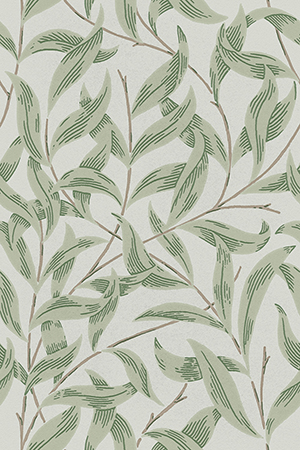
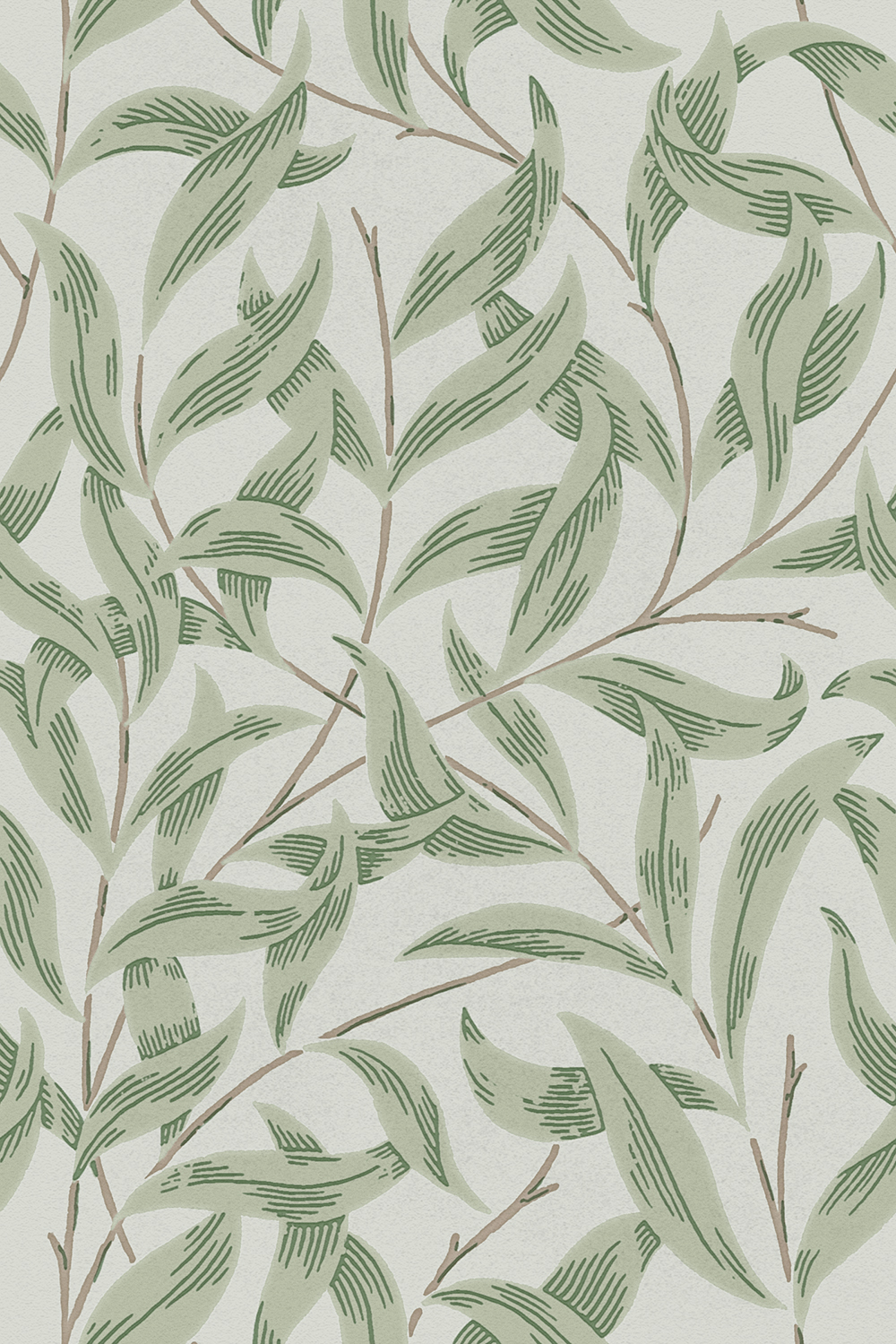
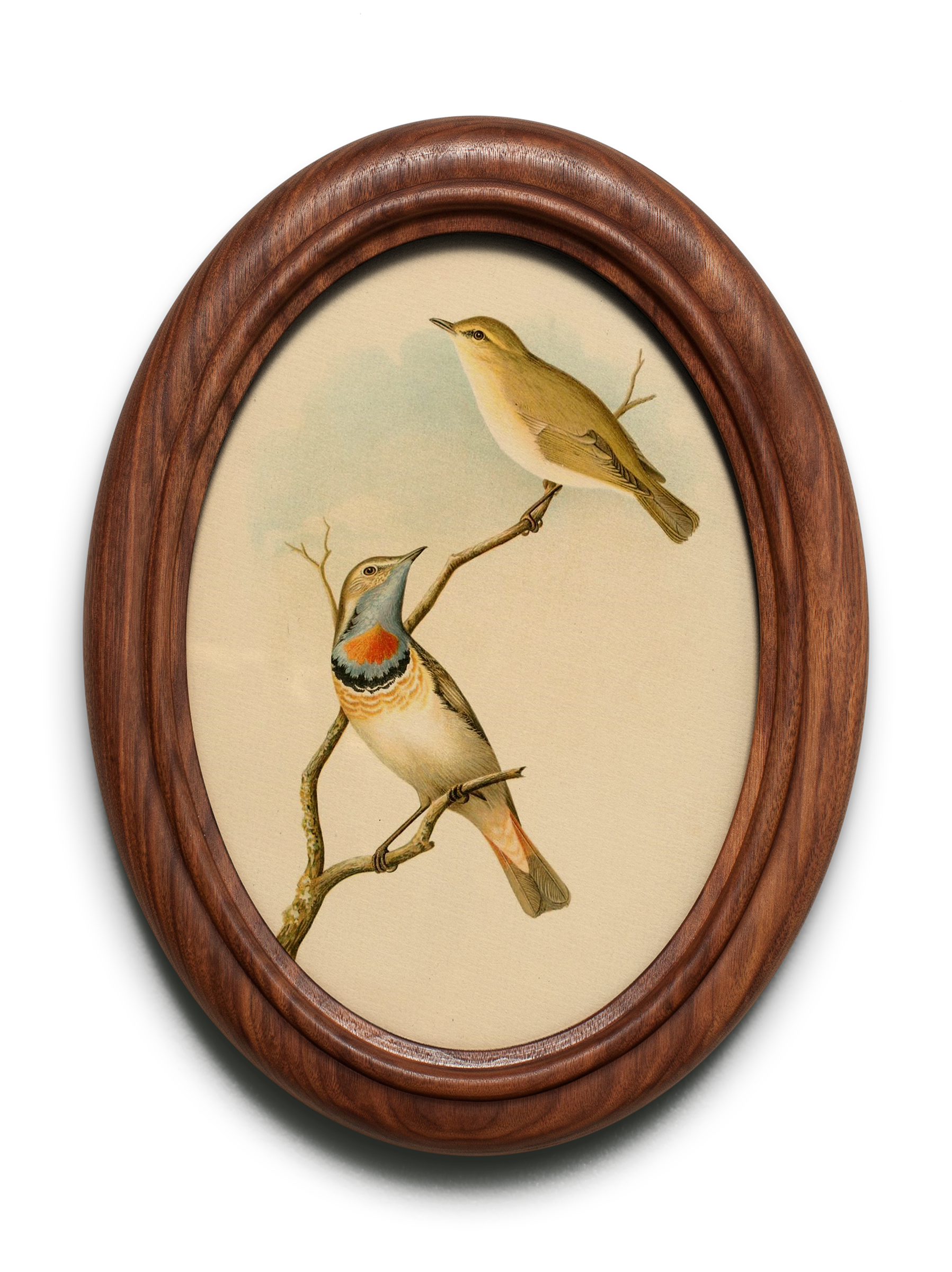
Warbler
by
David Jonathan Ross
Following the unique gestures of the types of William Martin as cut in 1790 for William Bulmer
Additional type design
by Bea Korsh
Website by Matthew Smith
“There’s something placid and comforting about this lighter touch, especially when compared to the vigorous, authoritative Scotch Romans that would follow it.”
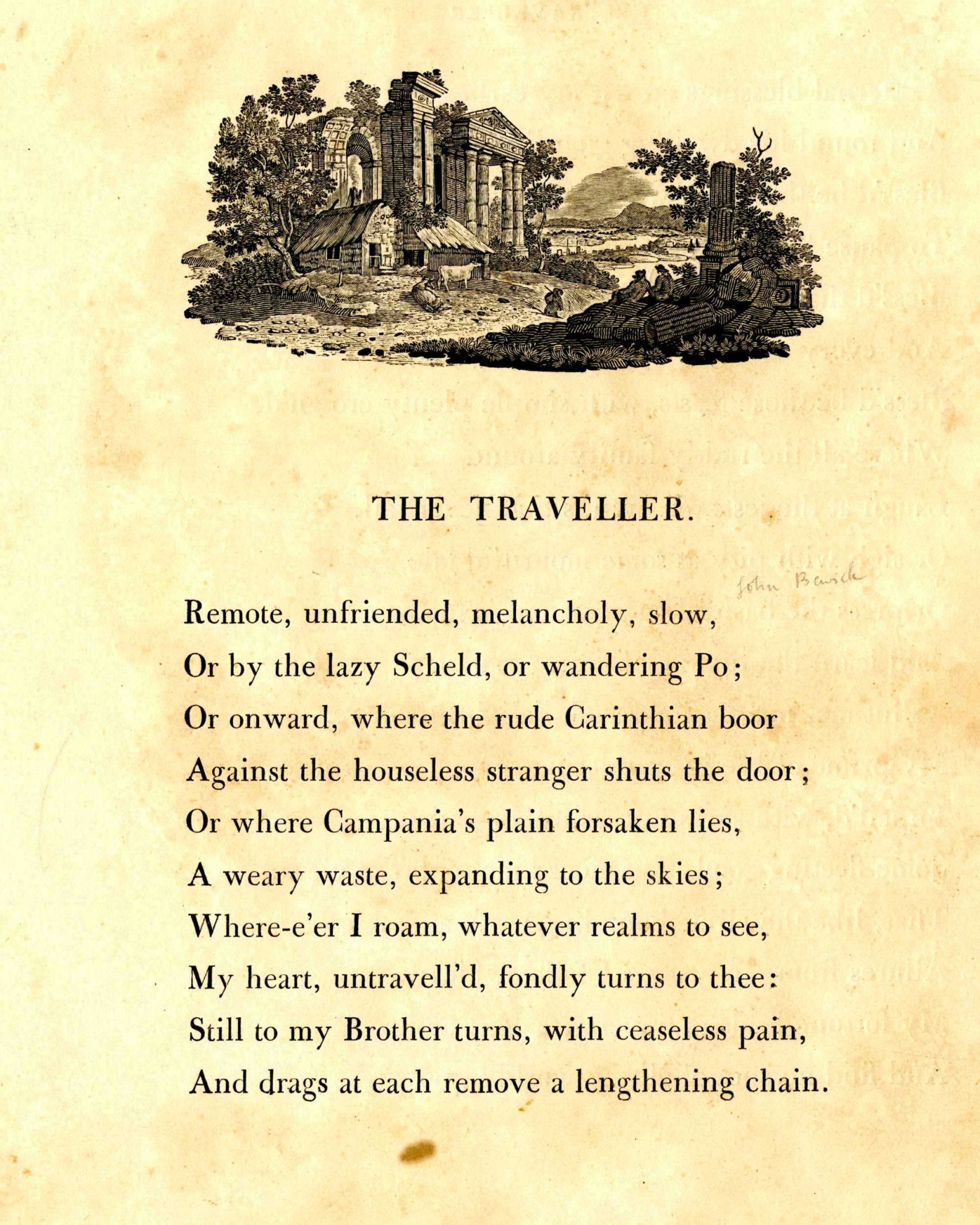
The first time I ever picked up metal type was in Barry Moser’s letterpress course. The assignment was simply to typeset my name, and the case of type I ended up in front of was Morris Fuller Benton’s 1928 typeface, Bulmer.
The design of Bulmer was based on the types cut by William Martin in 1790, for the English printer William Bulmer. Martin likely trained at Baskerville’s foundry, and as Patricia Cost writes, “Martin’s design seemed to bridge the gap between the Baskerville and Bodoni types—it was more condensed and contrasty than Baskerville, but less mechanical and modern than Bodoni.” (I guess this makes it a transitional Transitional?)
Since that day in the letterpress shop, I’ve had an affinity for this style. Maybe it was the tactile experience of holding letterforms in my hands, and maybe it was Martin’s gentle (maybe even genteel) approach to the Modern serif. There’s something placid and comforting about this lighter touch, especially when compared to the vigorous, authoritative Scotch Romans that would follow it.

Martin’s types were filled with small, subtle gestures that will grow on you after a while, and that’s what I tried to tap into in Warbler. In its display cuts, curves and bends don’t go directly where they need to go, but meander a bit instead…see the tail of the e or the shoulder of n. And in text sizes, I spent a lot of time debating how I could make these small gestures big enough to telegraph (à la Dwiggins’s M Formula) without becoming so overwhelming that they felt like a caricature. I’m talking about the swing of the a, and how its bowl rises a little before it falls. About the low waist on the k, how the g leans back a little, and how the weight of the t and e sags a bit in the lower-left.
Don’t get me wrong—I love a sharp, expressive serif as much as the next designer—but my hope is that Warbler can help remind us of their softer side. In a design landscape where everything is a lot all the time, a font like this might feel like a bit of a throwback, but also an example of the power of restraint.
Looking back at William Bulmer’s title pages, you’ll see that it wasn’t only the letterforms that practiced restraint: the entire typographic system also subscribed to the same idea of lightness and airiness, free from excess or decoration.
In this typographic vacuum, size becomes the crucial element of the visual hierarchy. In keeping with this spareness and simplicity, Warbler’s family consists of a limited selection of weights and instead focuses on its size-specific variants. These optical sizes contain subtle but powerful changes to proportions, stroke contrast and the scale of details such as ball terminals, tuning the typeface to be the right amount of “delicate” in each respective size.
One of the most striking features of bird-life is surely its restless activity. This is always apparent, but it attains to a state of almost feverish excitement as the spring advances, and the parental instincts re-awaken. As they gather strength, so they manifest themselves, in outbursts of song—often of exquisite beauty—strange antics, or wonderful evolutions in mid-air.
It is with these last that we are chiefly concerned here. As might be supposed, they present a wide variety in the matter of their form and duration. Black-game furnish an example of a very simple form of courtship flight, but it is associated with curious antics on the ground. And these, it is to be noted, are only to be witnessed soon after sunrise. Two blackcocks will approach one another and stand as if prepared to ward off a very vigorous onslaught; reminding one of two barn-door cockerels. With lowered head and neck they face one another, the beautiful lyrate tail spread fan-wise, and arched so that the curled, outer, feathers touch the ground, while the wings are trailed like those of the turkey-cock. Then one will at last rush forward, and seizing his adversary by the scruff of the neck, will administer a sound beating with his wings. The victor celebrates his triumph by a loud, and most unmusical screech, which has been likened, by that accomplished observer and sportsman-artist, Mr. J. G. Millais, to the call of cats on the house-tops at midnight. But presently a greyhen makes her appearance. Hostilities cease at once, on all sides; and intense excitement prevails amongst the whole assembly—for a large number of cocks will gather together at these sparring matches. Her approach has been observed by a single bird, who, unintentionally, gives the signal by suddenly drawing himself up to a rigid position of attention, till he is sure she is really coming, then he throws himself into the air and flutters up a few feet, uttering at the same time, a peculiar hoarse note of exultation. Immediately all the others follow suit; each seeming to strive to outdo his neighbour in a series of absurd pirouettings. Here we have a “Love-flight,” of exceedingly brief duration, associated with terrestrial combats and frantic prancings.
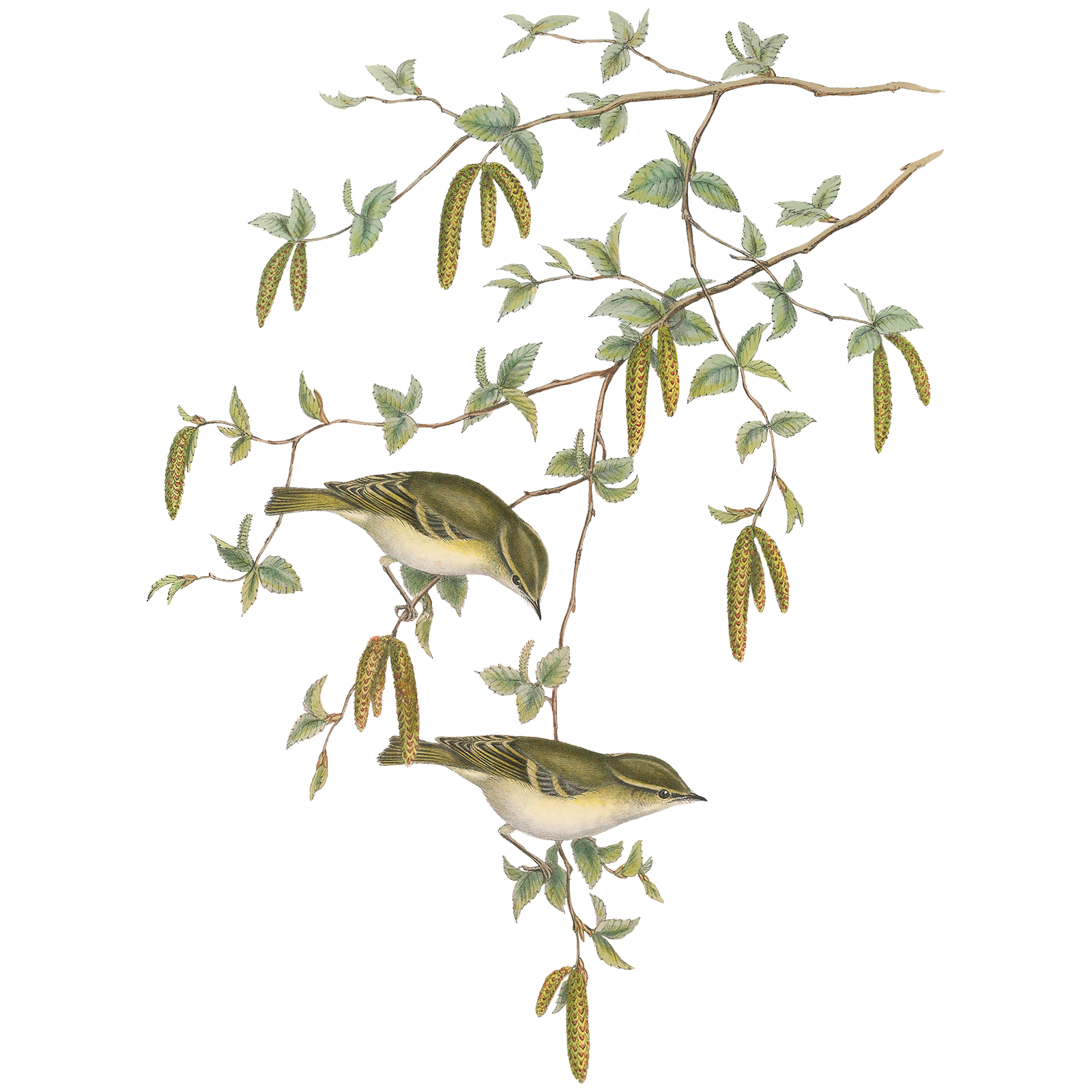

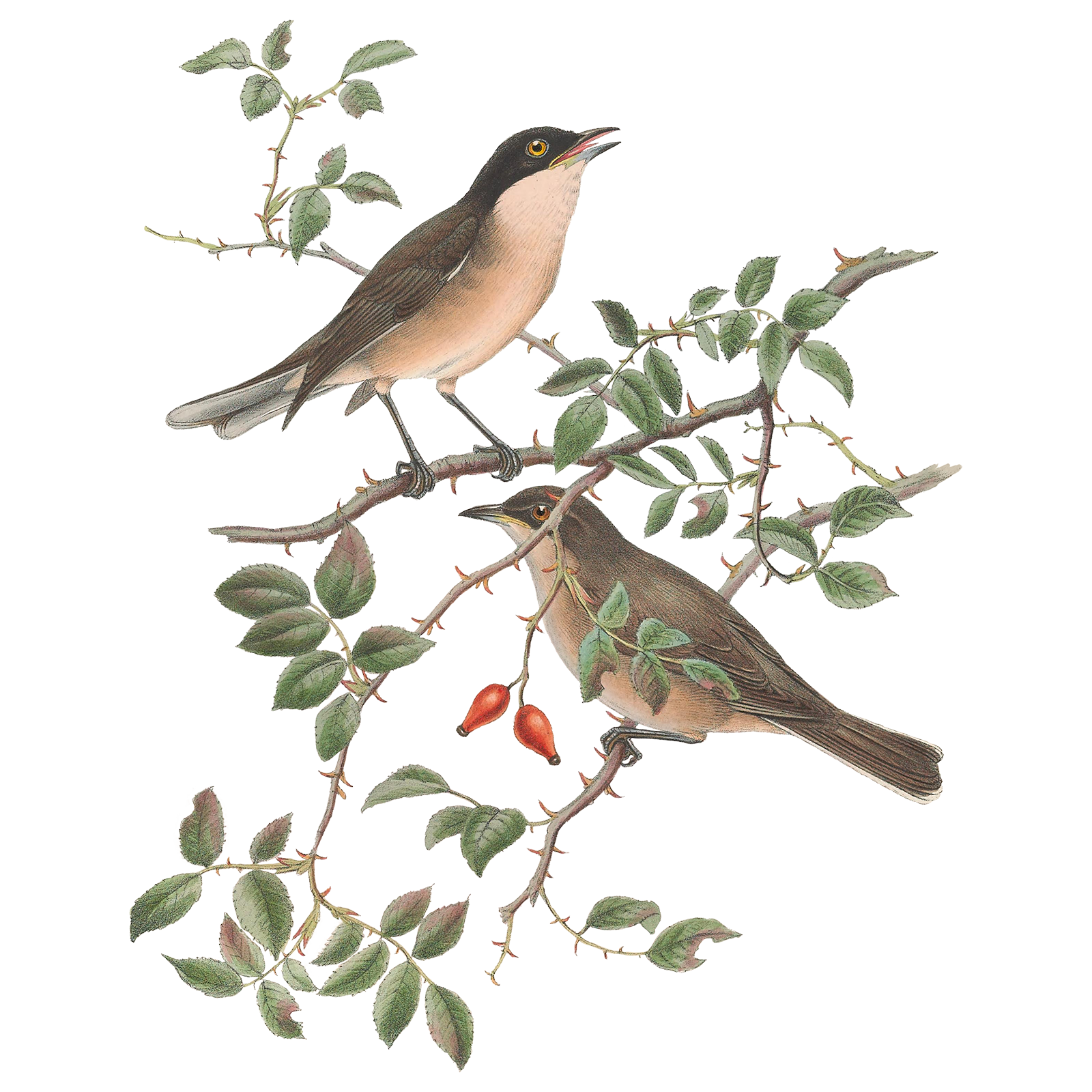
Abundant.
An Incomplete and likely Incorrect* Field Guide to the Various Eggs of East Etcætera
*Not that it matters a damn.
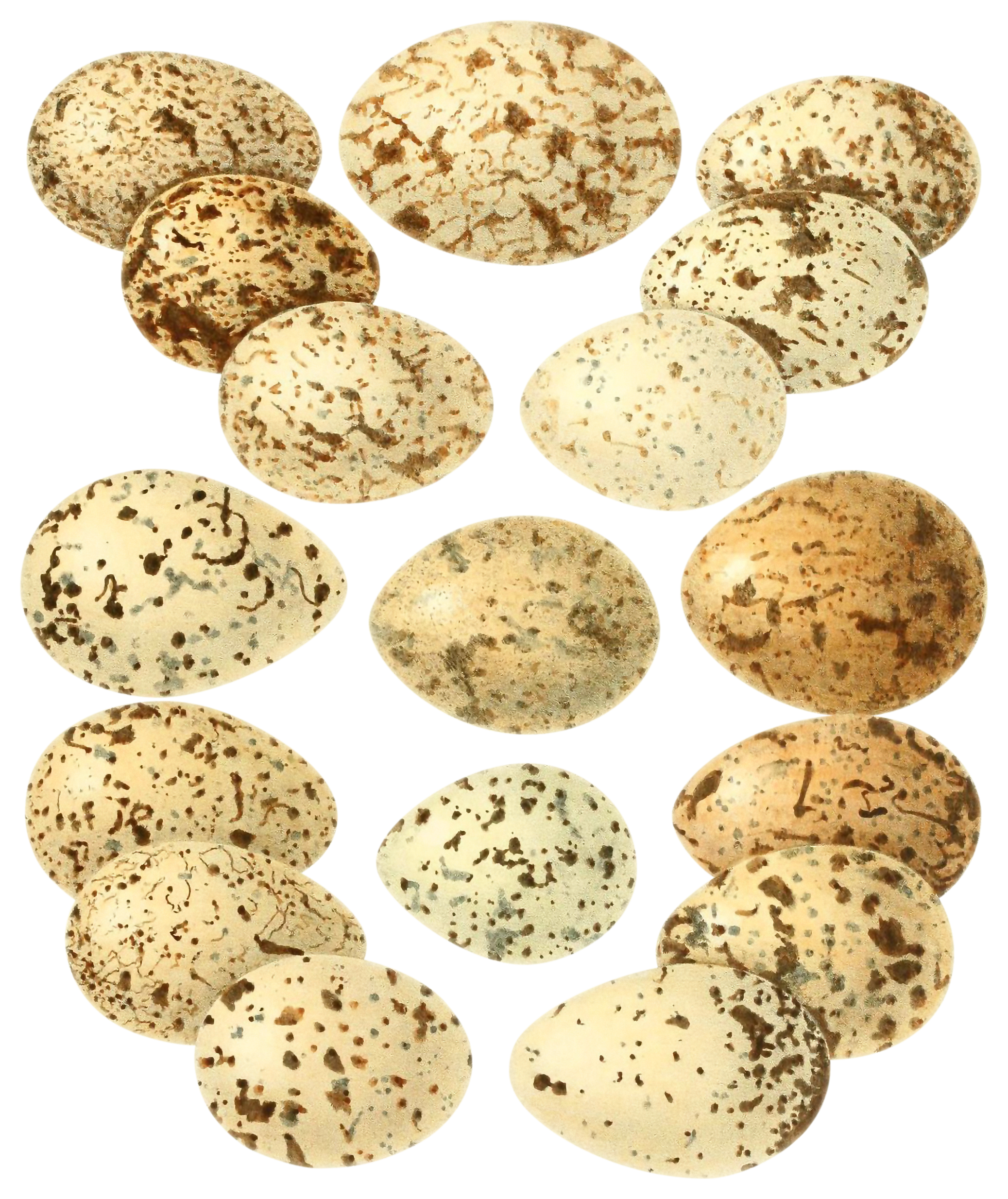
Illustration, Zur Fortpflanzung Geschichte der gesamten Vögel Dresden circa 1856.
Our garden may be very small, and its flowers few and far between; but as your bee-pasture is an area two or three miles round on all sides yours for the use of your bees, though entered in other peoples’ title-deeds, your own little plot need not much trouble you. Bees seem to prefer to feed at a little distance from the hive, but have no objection to pasture close at hand. In the beginning of August, when the honey-yielding flowers begin to fail, I have found Broawater Common, near Tunbridge Wells, which grows the finest heather south of Braemar, covered with my bees, and have lain down amid the heath-blossoms, watching and listening to my young friends, immensely enjoying their work. But if you have any spare space—and there are always nooks and spots available in the smallest garden—sow on these lemon-thyme in abundance, rosemary, lavender, salvia, borage, mignonette, and crocus. Apple-trees, gooseberry and currant-trees, and above all, raspberry-plants, are great favourites with bees; and as their blossoms come early in spring, they are most seasonable and productive. But your chief reliance must be on neighbouring acres of bean-fields and buckwheat or clover meadows, heather and furze, and hedge-blossoms. Lime-trees are very valuable; I wish people would allow thorn-hedges to blossom. Let me urge the cottager to use for the edging of his garden lemon-thyme instead of box or daisies. Do not fear keeping a dozen stocks. I think many apiarians talk nonsense when they allege that a district may be overstocked with bee-hives. If the surrounding country be wholly arable, with little common, and with too good farming, it may be overstocked. But there are still left commons unenclosed, woods and heath, and clover and tiny weeds, which farmers persecute and bee-masters love; and far off are gardens of all sorts and sizes, in which flowers are cultivated for the owners’ pleasure, constituting admirable bee-pasture. I only regret there is such a wide-spread rage for double flowers, for bees never touch them. On that magnificent standard rose, so rich in delicious perfume and so very lovely, a bee never alights; but the briar and hedge-rose are favourites and much frequented. On the Clyde, it is usual for bee-proprietors to carry their hives to Arran, Dunoon, and Kilmun, as soon as the heather comes into blossom; and cottagers take charge of them at a shilling apiece. The hives often therefrom receive great and remunerative additions. Dr. Bevans states:
Spotted Eggs of Swainson’s Warbler. On May 13 of this year I found a nest of Swainson’s Warbler in Coosawhatchie Swamp,—which is a very large river-swamp about five miles from Yemassee. Upon looking into the nest I found a single egg, and was very much surprised to see that it was distinctly marked over the whole of the egg. I left the nest with the egg to get the full set, and returned on the 15th and found the bird sitting. The nest contained three eggs which were all spotted. As these are the first eggs of Swainson’s Warbler which are distinctly spotted, a description will doubtless be of interest. I sent these eggs with the nest to Capt. Bendire, and at my request Mr. Ridgway has kindly described the eggs and I herewith give his description. “The two eggs measure, respectively, as follows:—.83 × .59, .85 × .60 inch. One of them, being broken, cannot be measured. The ground color of the eggs is yellowish or bully white; one of them is very faintly and rather sparsely flecked, chiefly on and new the larger end, with pale buffy brown; the other two are distinctly flecked with reddish brown or cinnamon-color, these markings most numerous, and in one egg most distinct, on the larger end.” The nest was built in canes, six and a half feet from the ground, and over running water, and is typical of a Swainson’s nest. After taking the nest and eggs I would not shoot the birds as I hoped I could get another set of eggs from them. I accordingly visited the same swamp again on May 26, and after an hour’s careful search I found the nest, with the bird sitting. I actually had my hand on her before she left the nest. The eggs—three, as in the first nest—are all spotted, much more so than the first set. They are all marked with reddish brown, upon a buffy white ground, though in one egg the ground color seems to be a little lighter than in the others, and it is not as heavily marked. The nest was built in canes, but was placed only three feet from the ground and in a comparatively dry situation. Mr. Brewster has described a set of three eggs of this Warbler which were taken by me. (See Auk, Vol. II, No. 4, 1885.) He says: “One is perfectly plain; another, like the larger egg of the first set, has two or three minute specks which may be genuine shell markings; while the third is unmistakably spotted and blotched with pale lilac.”
Purchasing Options
Warbler Elsewhere
-
Warbler at Type Network Hosted webfonts and larger licenses
-
Warbler at Fontstand Free trials and inexpensive desktop rentals
-
Warbler at Adobe Fonts Easy integration with Adobe Creative Cloud
Additional information
- PDF Specimen
- Desktop Format: OpenType CFF Format (Postscript OTF)
- Web Formats: Web OpenType Font Format (WOFF & WOFF2)
- App Format: OpenType TrueType (TTF)
- Language Support: Latin, Western & Eastern European • Latin, Vietnamese
- Cases: Uppercase • Lowercase • Small Caps
- Figures: Lining • Tabular Lining • Text • Small Caps
- Other: Superiors • Inferiors • Fractions
- Stylistic Alternates: Italic looped k • Italic conventional y
- Variable Axes: Optical sizes
- Don’t see what you need? Get in touch!
